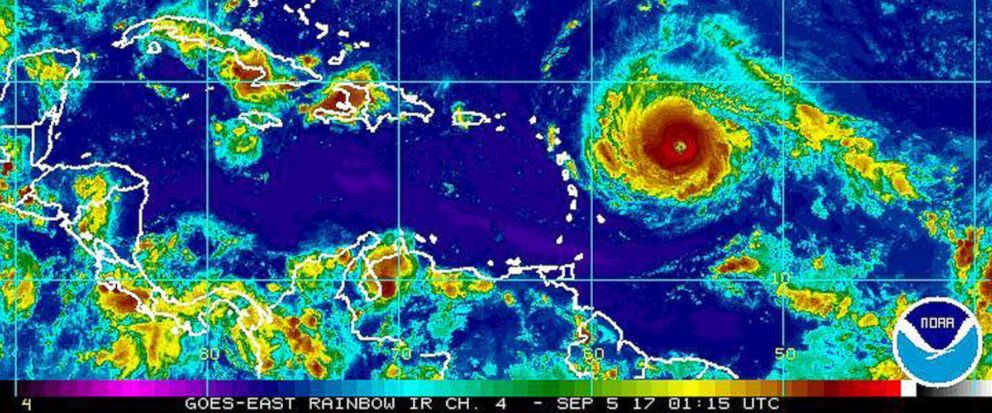Hurricane Irma: How to Prepare for a Monster Storm
Jon Stokes 09.05.17

Hurricane Irma is now among the most powerful storms ever to be recorded in the Atlantic; it’s so powerful that it’s beyond a category 5, and if a category 6 existed then it would fall under that heading.
Or, to put it another way, with sustained winds topping 190 mph, Irma is basically a miles-wide EF4 tornado as measured by the Enhanced Fujita Scale. Wikipedia describes an EF4 tornado — the second most intense, as the scale only goes up to EF5–as follows: “Extreme damage. Well-constructed and whole frame houses completely leveled; cars and other large objects thrown and small missiles generated.”
A storm this powerful can homes and larger structures right off the map, especially with the storm surge, so of course we here in Texas are tracking it closely.
Resources for Before and After a Disaster
One of the resources we’re using to track this storm is SpaceCityWeather.com, a Houston-based weather site that emerged during Harvey as the best place for sensationalism-free information on the in-bound storm.
The site is also tracking Irma, and tells us that while the chances of a Texas landfall are currently slim, it’s impossible to predict when and where the storm will turn north so pretty much everything is still on the table. It also looks like Florida is set to get hammered one way or the other, so if you’re in Florida then you should be making plans to move north as soon as you can.
Other resources we follow are the NWS Twitter account, along with BreakingNews911, the latter being more general and not weather-specific.
As I expand on below, fuel is the #2 priority after fresh water in an evacuation scenario. We just went through a gas crunch here in Central Texas, and when the shortages hit you then GasBuddy.com (either the site or the app) can help you find a place to gas up.
The Austin-based Zello app is also popular with first responders before, during, and after a catastrophe. It’s like a sort of Internet-powered CB radio, and it’s how the Cajun Navy is coordinating their efforts in the aftermath of Harvey.
(If you have other resources similar to the above that you’d like to share with everyone, please drop them in the comments, below. We’ll try to promote the best ones.)
Getting Ready to Get Out
I live in the greater Austin area now, but I grew up in Southwest Louisiana, and I and my family are veterans of many hurricanes and evacuations. My wife and I were volunteers in the shelters after Katrina, and my hometown in Lousiana was directly hit by Rita. A big part of my social network is in the Houston area and was impacted by Harvey, and we were affected up in Austin. This is my long-winded way of saying, this ain’t my first (or even second or third) rodeo.
In an evacuation, your top three priorities are as follows:
1. Fresh water
2. Fuel
3. Communication/information
Sure, you need food, shelter, and other basics, but the above three things will make or break you quicker than anything else.
Potable water is an obvious one, because without it you don’t have much time. We recommend having a filter like a Sawyer Mini or the like, but don’t depend it for everything. In Houston and many other areas with petrochemical plants nearby, the flood water is toxic and no amount of filtration is going to fix it. You’ll need a good stock of stored water, whether you’re hunkering down or getting out. Get this first.
Fuel is next on the list, because without it you’re not going anywhere. You also won’t be able to power a generator. At the very least, fuel gives you options, which is why it’s critical.
For the longest time here on AllOutdoor.com, we’ve recommended diesel vehicles for bug-out/evacuation purposes. As I documented in this Twitter thread from just last week, I’d have gotten stuck in Dallas if I hadn’t been driving a diesel truck.
1/ Just flew into DFW and stopped on the way south to refuel. There's no gas for miles. pic.twitter.com/vtXkwIeDil
— Jon Stokes (@jonst0kes) August 31, 2017
I took the picture above right outside of DFW while I was dieseling up my new Titan XD, which I talked my wife into partly for this exact reason.
Finally, there’s communication. Your cell phone is the obvious thing to have with you, but don’t discount the importance of weather radios with AM reception, along with old-fashioned CB radios. Walkie talkies are also great for coordinating an evacuation involving multiple vehicles, and for coordinating rescue efforts when cell towers are down.
Ultimately, communication channels are how you’re going to make critical decisions, like when to move and when to stay put. They’ll also point you to resources and, if it comes to it, point rescue workers to you. So keep those communication devices charged up, sealed in a waterproof container, and close at hand.
Looking Ahead
As Irma approaches, we’ll be posting regular updates here on AllOutdoor.com. A number of our writers are in the potential path of this storm, so we’re all watching it closely. If you have anything to share with us, please drop it in the comments or send us an email.